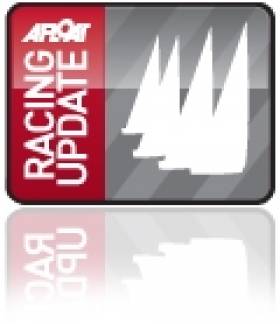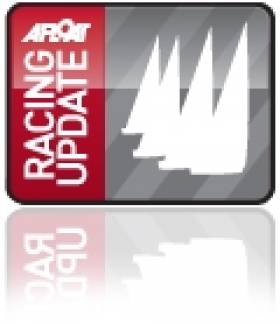Displaying items by tag: moth
Moth Dinghy Foiling Photo Action From Dun Laoghaire!
#mothsailing – Foiling Moth's took to the waters of Dun Laoghaire for the latest round of their 2014 Tour this bank holiday weekend, producing the now familiar thrills'n'spills. Race Officer Con Murphy from the National Yacht Club captured the action. Scroll down for photo gallery below.


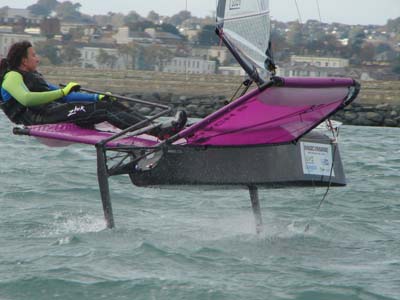
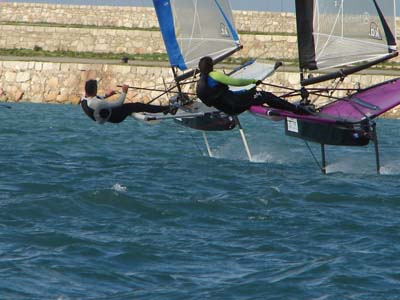
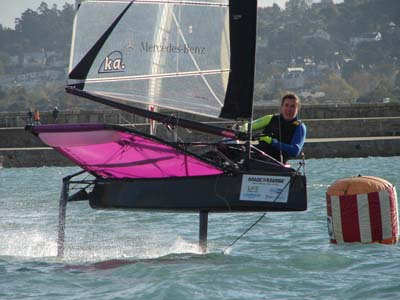
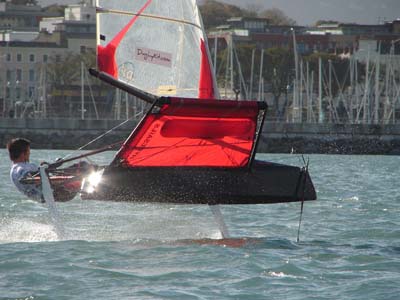
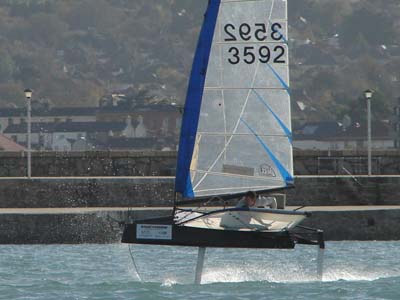


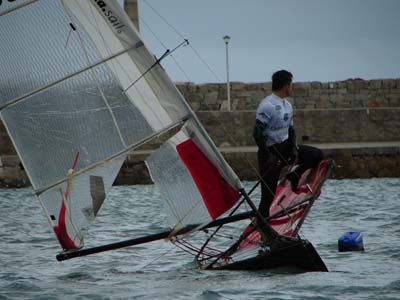



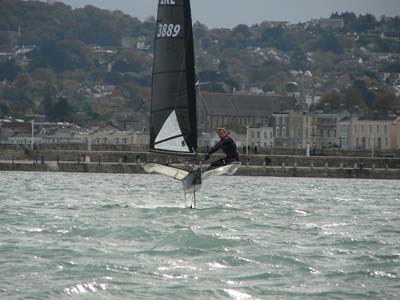
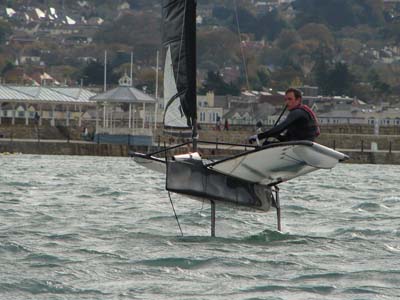
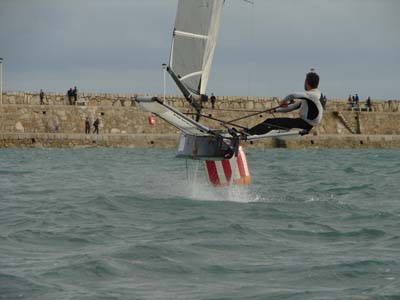


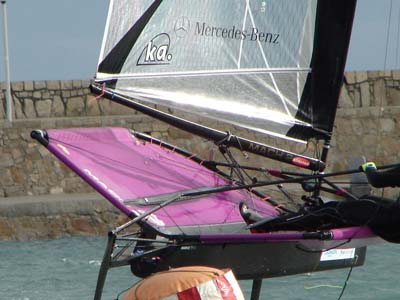
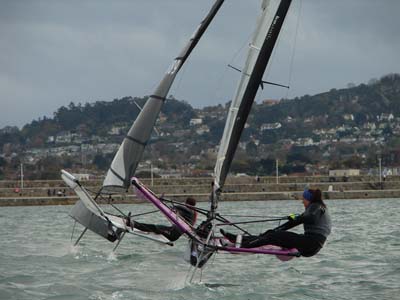
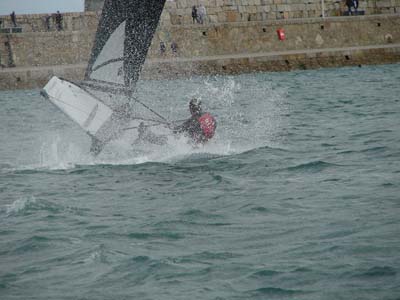
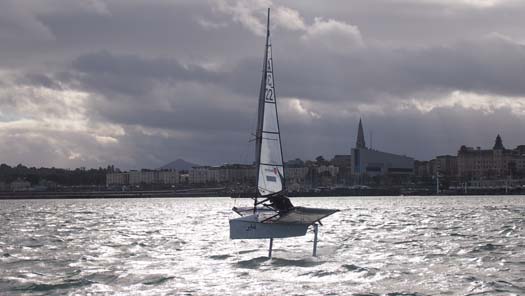

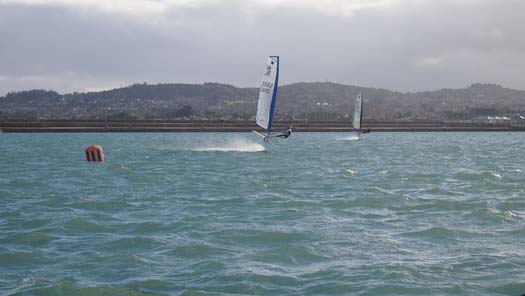
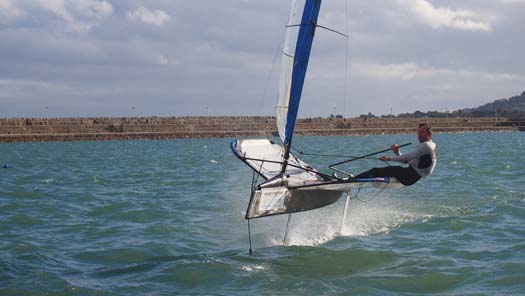
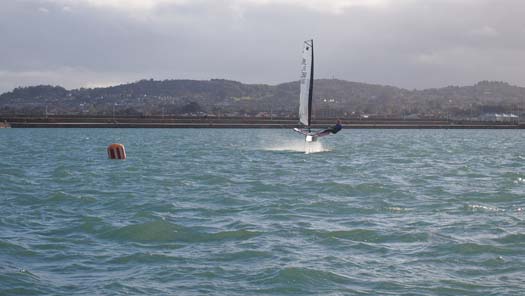
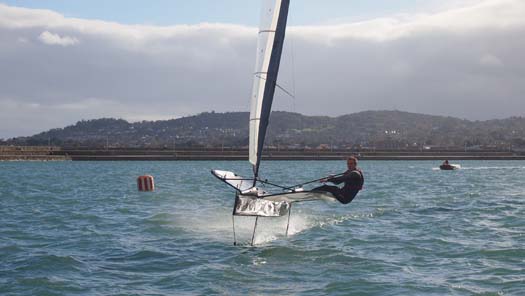


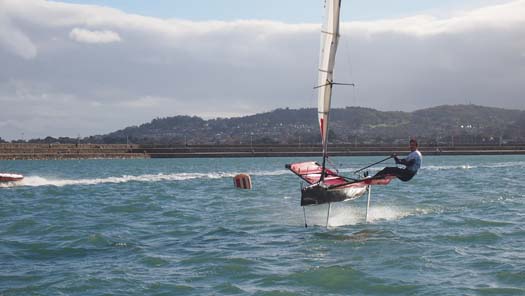

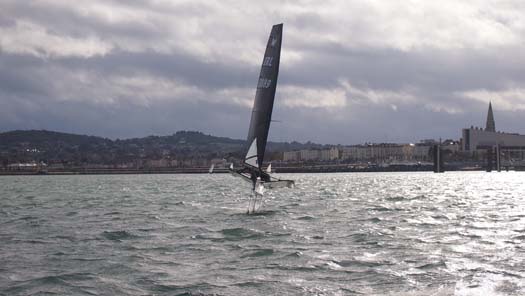
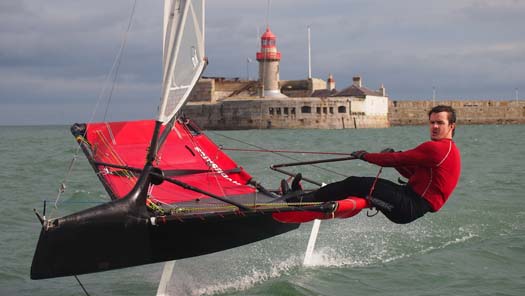


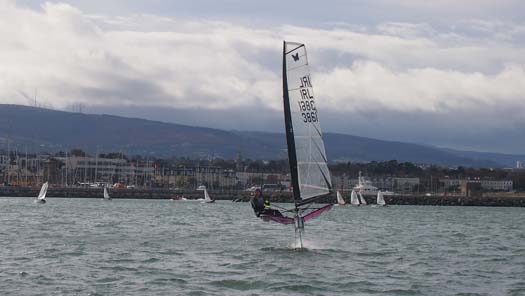
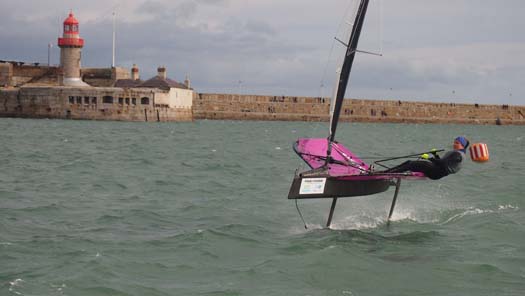
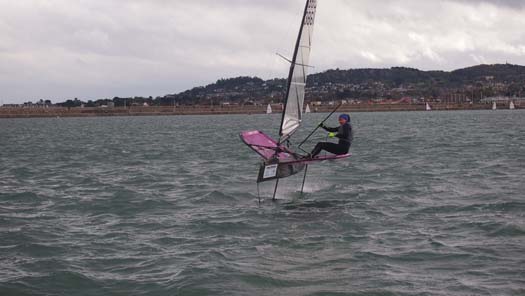
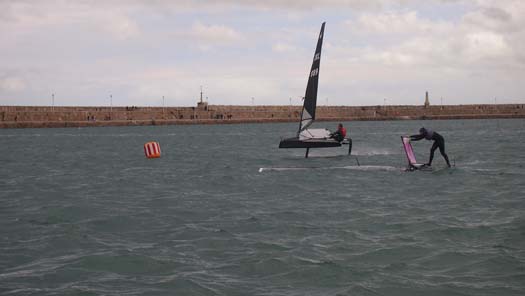
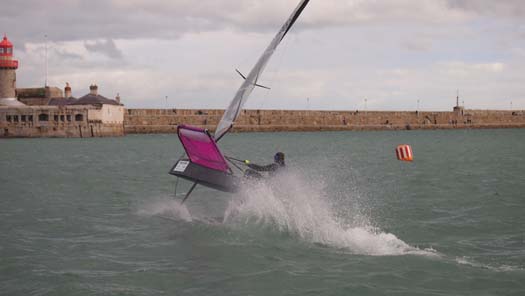
Irish Foiling Moth Makes Return After Fifty Hull & Rig Modifications
#mothsailing – After the International Moth class worlds in Hayling Island this Summer it was back to the drawing board for the Irish Moth building development programme. Chris Allen of Voodoo Boats in County Wicklow has made another 50 modifications to the hull, deck and rig based on earlier trials and lessons learnt from entering the boat at the Hayling Island event.
The Irish Voodoo Moth "V2.0″ is now back at the National Yacht Club in Dun Laoghaire, the "spiritual home" of the class, according to NYC sailing manager Olivier Prouveur.
The foiling Moth fleet will be in action this Bank Holiday week-end at the NYC with International Race Officer Con Murphy in charge of delivering a fast pace programme of racing over three days...
Moth World Championships Entry Now Open for 2015 Australian Event
#moth – Entries are now open for the 2015 McDougall & McConaghy Moth World Championships, which is being hosted by the Sorrento Sailing Couta Boat Club, Australia between 9-16 January.
With Australia's Nathan Outteridge the reigning World Champion following his emphatic victory at Hayling Island UK last month where Irish crews from the National Yacht Club participated and Annalise Murphy won the womens world title, the stage will be set for some great racing on the beautiful waters of Port Phillip.
The World Championships will be preceded by the Australian National Championships also at Sorrento, on 7 -8 January.
Online entry and Notice of Race are available here.
Foiling Laser Kit Pioneer Now On UK Tour
#Laser - Foiling Laser pioneer Peter Stephinson is currently on a tour of the UK to evangelise the potential of his easy add-on kit that can turn any Laser dinghy into a foiling rocket to give even the dedicated Moth a run for its money.
According to Sail World, Stephinson – who teamed with Moth class president Ian Ward to develop the concept in their native Australia, forming Glide Free Design – has kicked off his visit in Portsmouth, getting World Laser Masters champ Nick Harrison up to speed with a set of this company's Glide Free Foils.
Just over a year ago Afloat.ie reported on their foiling Laser kit going on sale, allowing Laser sailors to easily convert their vessels to foil across the water like the popular Moth class – reputed to be the fastest dinghy in the world – but without the expense such ultra-modern vessels entail.
Sadly Stephinson's itinerary doesn't seem to include a visit to Irish shores – though it's only a short trip to Britain for anyone who wants to see the remarkable foil conversion kit in action.
#moth – Five Irish sailors – including three Olympians – got a lesson in the complexities of International Moth sailing at the Hayling Island class world championships last week. In an event won convincingly by Australian Nathan Outteridge, the National Yacht Club's Rory Fitzpatrick was one of two Irish skippers to make the 70–boat gold fleet. Fitzpatrick finished mid fleet in 36th with London 2012 49er helmsman Ryan Seaton of Belfast lough in 45th.
Annalise Murphy was next best finisher taking 17th in the 63–boat silver fleett but significantly it was a result that also gave the Dubliner the woman's Moth world championship title. Alistair Kissane was 18th and the John Chambers steered new Irish built prototype 27th.
The forecast for the final day of racing was for no wind, but it turned out to be a sparkling day with the best breeze of the week. Four races were held in glorious Summer racing conditions, with 10-14 knot winds, leading to very tactical racing.
Gold fleet racing started at 9.30am.
There were a few white-caps on the waves at the start of the final race - fantastic conditions.
The final leg became really unstable with all the leaders dropping off their foils at times. In the end Outteridge knocked in 15 gybes in a band of breeze to win the race by a country mile.
Nathan said about the final race, "It had got a bit soft in that very last race and I actually fell off the foils at the top mark. Josh Mcknight and Chris Rashley gybed in a really good puff, and I managed to gybe, get foiling again and did about 15 gybes down in this one little puff, turned around half-way to see how I was going and no-one was foiling so it was a pretty nice way to finish, to have a really big lead."
On Australia retaining the #MothAshes Josh Mcknight said, "Well I mean that's really all we come to these events for - the Moth Ashes. It's a great trophy to have as it puts emphasis on a bit of team spirit among Australia and England... A-Mac's got a knack for pulling something out of the bag, whether it be new kit or just a stellar result.
Top five, Gold Fleet:
1. Nathan Outteridge, AUS, 23 points
2. Chris Rashley, GBR, 33
3. Josh Mcknight, AUS, 34
4. Scott Babbage, AUS, 51
5. Ben Paton, GBR, 60
Full results here
#irishmoth – In another first for Irish sailing, a Bray, County Wicklow design and build of one of the world's leading edge dinghy types will make its debut on Saturday at the BMW Frank Keane Royal St. George Yacht Club regatta on Dublin Bay. Pioneering International Moth Sailor John Chambers will compete in the new foiling hull, from the design board of Chris Allen, against a burgeoning 12–boat Irish fleet that has attracted a range of top Irish dinghy sailors to its ranks.
In recent years, the International Moth, a development class, has literally take flight with the advent of lifting hydrofoils on daggerboard and rudder, which lift the entire hull and skipper above the water surface, dramatically reducing drag and increasing speed. Now Ireland is set to play its role in future development.
'It's a displacement hull, so not designed to foil in anything under six knots', says Allen of the new craft, that took its maiden sail at the National Yacht Club on Wednesday.
Top speeds of Moths can be above 30 knots. Last month, a former American Fireball dinghy sailor became the fastest dinghy sailor in the world, clocking up a time 36.5 knots This high speed is reflected in the International Moth's RYA Portsmouth Yardstick of 600, the fastest of any sailing dinghy or multihull.
The key features of the Irish design is that when the breeze is above six knots it will reach its foiling speed more easily than some existing designs. According to Chris, the Irish hull is a progression of existing designs and the hope is that its 'lift speed' will be quicker so the boat 'flies' sooner.
The design also features a new look at foil control systems with a smoother and more direct automatic adjustment.
The new hull is also 'more boat shaped than boxed shape' says Chris, who claims it is is stiffer than rivals because it has more shape, more rocker and rounded in the sides.
Constructed entirely in carbon fibre and weighing under eight kilograms, the boat will compete at the 2014 World Championships at Hayling Island in the UK in a fortnight in a fleet of 140 boats.
Depending on its world championship performance, Chris hopes the new hull called 'Voodoo' will be the first of many international orders.
The cost of the boat is comparable to other production Moths at approximately €12,000, depending on choice of rig and equipment.
Fastest Dinghy in the World – Foiling Moth Clocks 36.5 Knots
#mothdinghy – A former American Fireball dinghy sailor has become the fastest dinghy sailor in the world, clocking up a time 36.5 knots on a foiling Moth dinghy. Charleston's Ned Goss who is well known in performance sailing circles is a pro racer in both inshore and offshore disciplines.
Rory Fitzpatrick Wins Howth YC Round of Irish Moth Tour
#moth – Six wins for Rory Fitzpatrick of the National Yacht Club gave him the overall lead in the second round of the Irish Moth tour at Howth Yacht Club at the weekend. The Dubliner discarded a second in the penultimate round of the foiling class to be a clear winner ahead of club mate John Chambers who had three seconds and four thirds in the seven race series (video above). Third was Wexford's Ronan Wallace and fourth the National's Annalise Murphy. Results available to download below.
#mothtour – The Irish Moth fleet planned a weekend away in Lough Ree for our third ever event! Ronan Wallace (moth newbie) and myself (Annalise) arrived down to Quigley's Marina in Killinure early on Friday afternoon which gave us time to set up our boats before easily launching off the pontoon (staying nice and dry!) and heading out into the main lake for a great sail up and down to Hudson Bay 2 or 3 times! By the time we got in Ryan Seaton had arrived guided by his tomtom on the scenic route from Belfast to Athlone and John Chambers arrived not to soon after! Both told stories of passers by asking what kind of airplane was on the roof of their cars! We all headed to Glasson Golf Club for dinner before going back to the Killinure Chalets where we had taken up residence in the 17 man house!
The sailing weekend was organised by Cathy MacAleavey and it was for both the most modern and ancient of classes; the Moths and Water Wags! Based from Quigleys Marina in Glasson, the event included a round of golf on Friday afternoon and dinner afterwards at the Glasson Country House Hotel and Golf Club and was supported by Lough Ree YC and the National YC who each supplied support ribs.
The next morning we all got rigged and changed, then had a short briefing where Con told us the plan for the day! The idea was to do 3 races off the marina before racing downwind to The Wineport Lodge for lunch, followed by another 3 races in front of the Wineport then a race home! After one rather traumatic race where nearly everyone manage to crash into each other or the rushes at some point we headed off downwind to the Wineport which turned out to be a real adventure sailing through small cuts and around islands! Once we arrived down to the area in front of the Wineport, we did another 2 races, Rory was in good form so far winning 3 out of 3!
We then headed in to the Wineport Lodge for lunch. We were treated like kings, and had an amazing selection of soup, sandwiches, chicken wings and chips all while in our wetsuits! After possibly a sandwich or five too many we headed back out on the water, Ryan and I now regretted our decision to park our boats in the forest as getting out through the thick reeds proved to be extremely difficult, after 15 minutes of swimming while towing my boat in the extremely chilly Lough Ree water I was back on the race course, Ryan however ended up abandoning this tactic and carried his boat around to the jetty at the Wineport!
Back for more racing and it had got a bit more patchy so looking for wind was what proved to be important (and not capsizing). In race 4 Rory crashed out meters from the finish line and watched Ryan, myself and John all speed by him. Race 5 was Ryan's race finishing close to a leg ahead of the rest of us! Race 6 was a quick upwind to the windward mark then a fast reach across to the cut then a 20 tack upwind back to Quigley's Marina. Rory, Ryan and I all managed to get through the cut in the rushes foiling and we then met up with Gavin who had chosen the more sensible route home! It was then a battle of fitness and boat handling all the way back to the marina. John and Ronan unfortunately hit a lull as they raced through the cut and spent quite a bit of time stuck in the rushes.
"what kind of airplane was on the roof of the car!"
After an exhausting day 1, moth newbie Neil O'Toole had a quick blast in John's boat before we all headed to the Killinure Chalets Pub for dinner. A mix of T-bone steaks and giant crispy ducks came out so we were all very well fed at the end of a long day!
Sunday started off looking like a nice medium day but by the time we were launching it was up to 20knots gusting 25 sometimes, so Con made the call to race us just of Quigley's marina again! All 7 of us got out on the water after Gavin fixed his main foil and Neil got his boat sorted too. In some of the gusts downwind we were hitting 25-28 knots and trying to turn up at that speed is extremely difficult but luckily we had a good incentive to get the turn ups right as if we didn't we would crash into the reeds at the side of the lake! Race 7, race 8 and race 9 were won by Rory with Ryan and John taking second in one each. Ronan and me were busy trying to get around the leeward mark in both these races! In the last race of the day Rory and I were neck and neck all the way around and after an out of control round up I managed to get just ahead of him to win by a boat length!
Rory retained the teapot trophy, with Ryan in second, John and Annalise finished on equal points and then Ronan, Gavin and Neil. We all had a great weekend and would like to thank Quigley's marina for letting us launch from there, The Killinure Chalets for the great house, The Wineport Lodge for the amazing lunch and letting us sit inside their restaurant in our wetsuits! The Wag class for showing us they are definitely the class who has the most craic! But particularily to Con for being OOD and Eddie and Dara for helping out on the committee boat! Clara for the photos and not getting irate over the amount of carbon chat that happened at the weekend, and last but not least Cathy for organizing everything! It really was a brilliant weekend!
Olympic Sailing Coach Wins Moth Dinghy Christmas Cracker off Dun Laoghaire
#moth – What the Irish Olympic sailing team and other high speed fans get up to in their downtime aka 'The Irish Moth Tour' moved to Dun Laoghaire at the weekend for the Moth Christmas Cracker at the National Yacht Club. Competing off the East pier in Dun Laoghaire, Olympic coach Rory Fitzpatrick won the last event of the 2013 season against a fleet of now eight Moths to include John Chambers, Rory Fitzpatrick, Graeme Grant, Alistair Kissane, Ben Lynch, Annalise Murphy and Fireball champion, Stephen Oram.


























